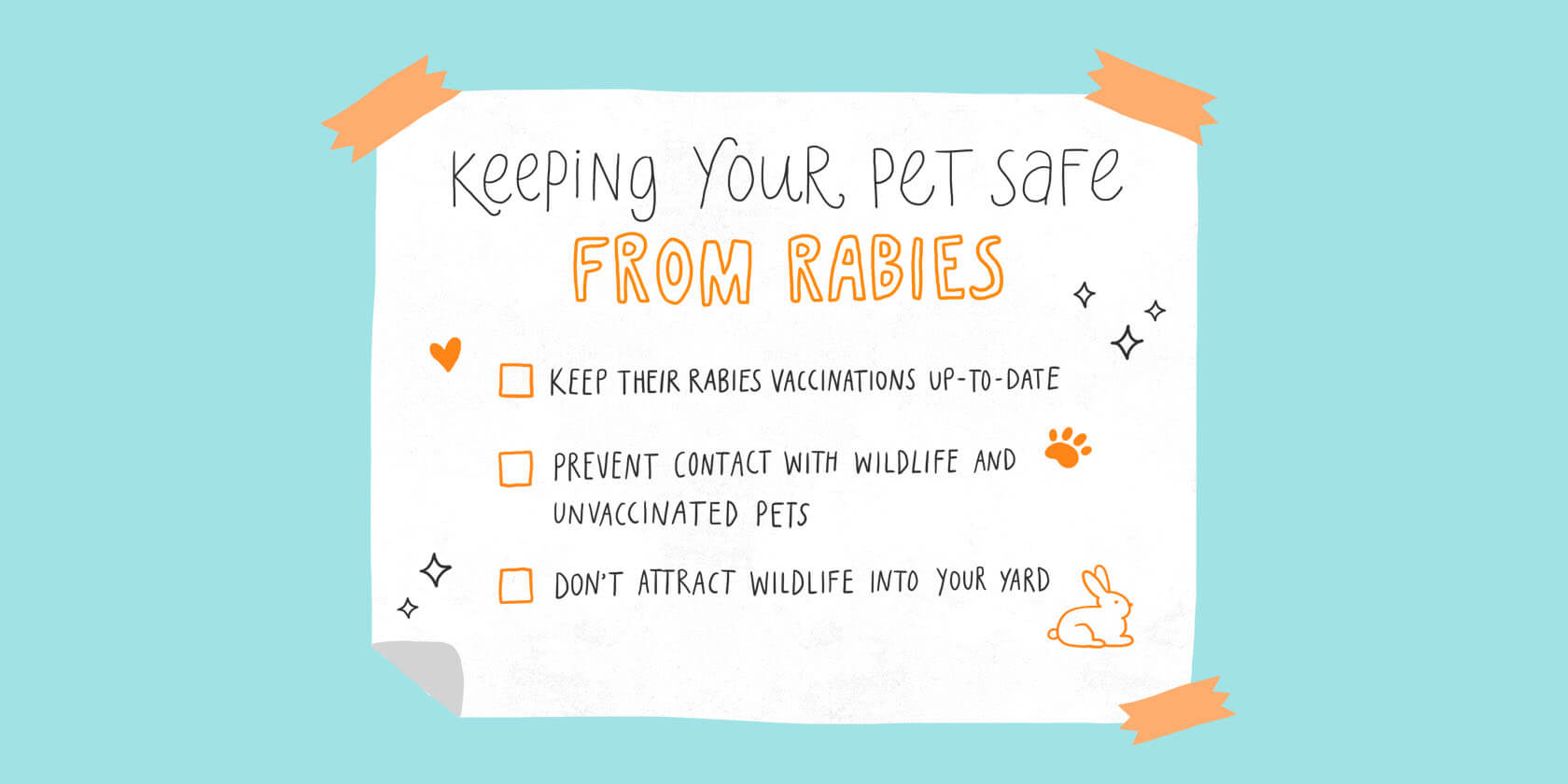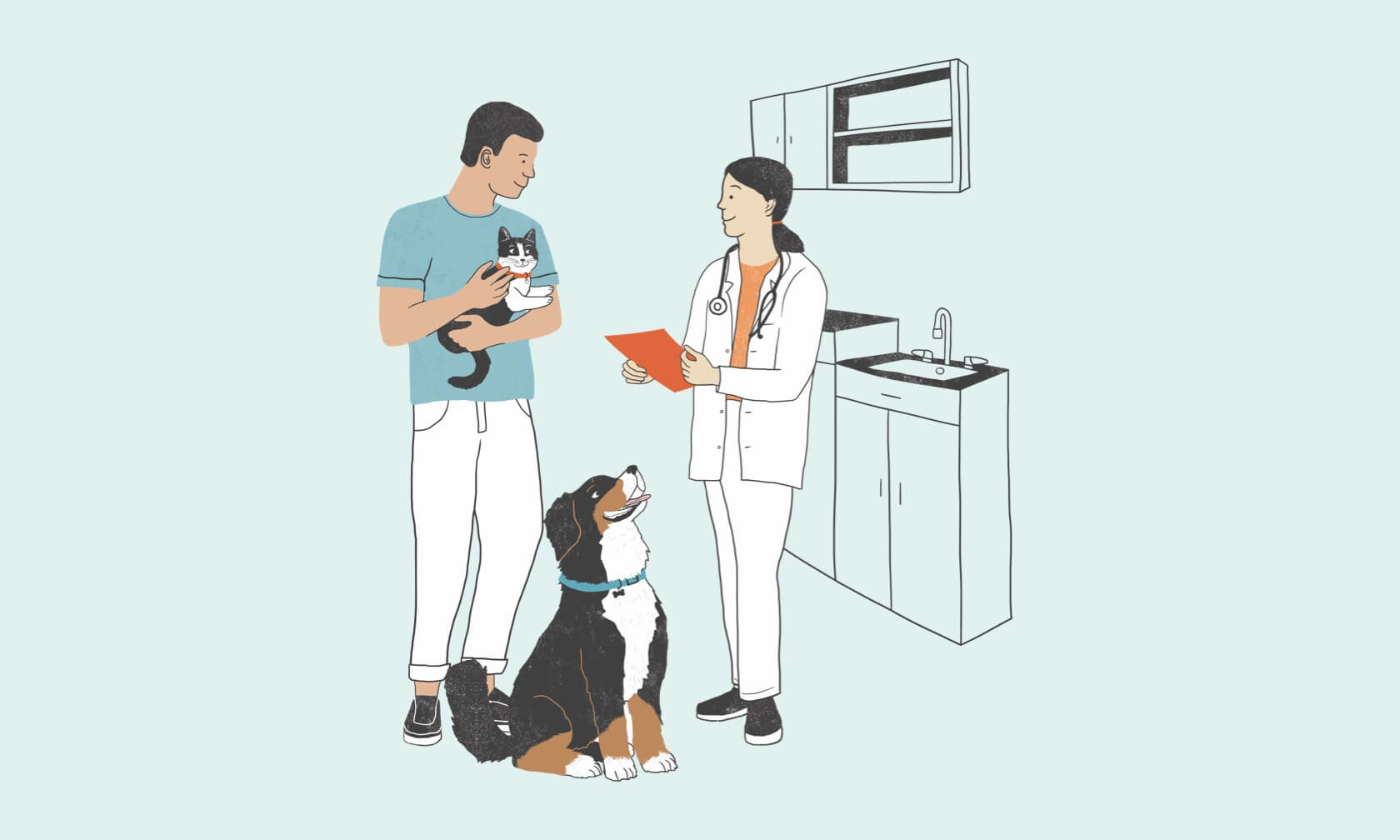Rabies is a deadly disease caused by a virus that attacks the brain and nervous system of mammals. The good news is that your pets can be protected from rabies — all it takes is an up-to-date vaccination from their veterinarian.
How Do Pets Get Rabies?
Pets get rabies by getting bitten by, or coming into contact with the saliva of, an infected animal. Rabies is seen more often in certain wildlife species including bats, raccoons, skunk and foxes.1
Once the rabies virus enters the body, it travels along the nerves to the brain and attacks the nervous system. While we usually think of rabies showing signs immediately, depending where on the body a pet is bitten it can take 3-12 weeks (sometimes longer) for clinical signs to show.2 However, once symptoms begin, they are sudden and noticeable.3
Signs of Rabies in Pets
- Difficulty swallowing
- Ataxia (uncoordinated walking)
- Behavioral changes
- Lethargy
- Fever
- Vomiting
- Anorexia (lack of appetite)
5 Lesser-Known Rabies Facts
- Cats are more likely to become infected than dogs. You may think dogs are the most common domestic rabid animal, but cats are infected at a much higher rate than dogs. Since 1992, cats have been the most frequently reported rabid domestic animal (followed by dogs).4 This is because many cat owners do not vaccinate their cats against the disease.1
- Indoor-only pets can get rabies. While indoor-only pets don’t have contact with wild animals like outdoor pets do, they can still come into contact with rabid animals if one enters the home. Bats — the most common rabid animal in the United States – enter homes and can bite or scratch pets.1
- Rabies virus infections in mammals are almost always deadly. When a suspected rabid animal goes to the vet, there are two options: euthanize or quarantine them. Even if you make the decision to quarantine your pet, there is little chance of survival if infected — even if your pet isn’t showing signs of the disease. Once a pet shows clinical signs of the disease, survival is not likely.5
- There is no test for rabies in live animals. The only way to diagnose rabies is through testing of brain tissue once the animal has died or been euthanized. The only way to determine if a living animal has rabies is to quarantine them and wait for visible clinical signs to show.5
Take preventive measures to keep your pets safe from rabies:
Ensure that all your pets are up-to-date on their rabies vaccination. The first, best and easiest step is prevention — talk to your vet to make sure your pet is current on rabies vaccination.
Prevent contact with wildlife or unvaccinated pets. Keep dogs on their leash and keep cats indoors.
Don’t attract wildlife into your yard. Keep food sources inside to prevent potentially rabid animals from coming near your pets (like raccoons, skunks, foxes, and bats).
ZPC-00329R3
- Rabies and My Pet. AVMA. https://www.avma.org/public/Health/Pages/rabies.aspx. Accessed February 10, 2025.
- Compendium of animal rabies prevention and control, 2016. National Association of State Public Health Veterinarians Compendium of Animal Rabies Prevention and Control Committee. http://nasphv.org/Documents/NASPHVRabiesCompendium.pdf. Accessed February 10, 2025.
- Rabies in Dogs. Merck Manual. https://www.merckvetmanual.com/dog-owners/brain-spinal-cord-and-nerve-disorders-of-dogs/rabies-in-dogs. Accessed February 10, 2025.
- Rabies in Cats. Fetch by WebMD. https://www.webmd.com/pets/cats/rabies-cats. Accessed February 10, 2025.
- Rabies Facts and Prevention Sheet. American Humane. https://www.americanhumane.org/fact-sheet/rabies-facts-prevention-tips/. Accessed February 10, 2025.




